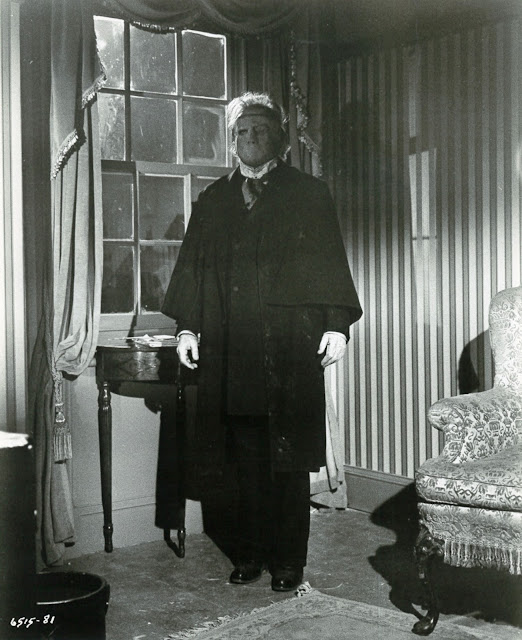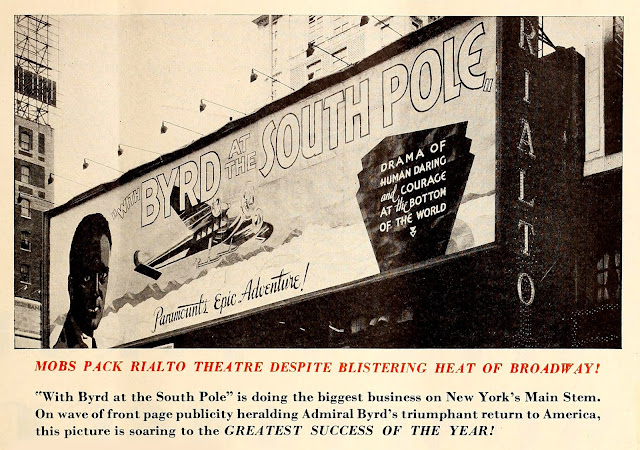Halloween Harvest 2015 --- Part Two
The Biggest Audiences Hammer Ever Had
When did a largest-ever viewership sit down to Hammer films? By available evidence, it looks to have been during the 1967-68 broadcast season, when networks premiered Evil of Frankenstein(1-2-68), Hammer's Phantom of the Opera (1-30-68, repeated 6-29-68), and Kiss of the Vampire, as retitled Kiss of Evil (12-19-67), these shown on NBC. Then there was Die! Die! My Darling on CBS (1-27-67, repeated 7-13-67) and The Nanny (also CBS: 10-31-68, repeated 8-28-69). Ratings and audience share aren't there for every title, but it would appear that The Nanny was the best crowd getter of the primetime lot. A number of Hammer films would show up later on the CBS Late Movie, a 70's showcase where most monster boomers saw these films for the first time. Quick poll: How many caught The Nanny, or any of these Hammers, in a theatre as opposed to television? I'll bet statistics would go ten to one in TV, or cassette/DVD, favor. For vast viewing majority, the tube was primary source for not just Hammer movies, but all movies.
Veteran producer Edward Small pointed up the disparity to Variety on 11-17-65: "Most "A" pictures, with few exceptions, play to 5,000,000 people domestically (in theatres) over a period of five years. On TV, they are seen by twenty million in one night." Broadcasting magazine would estimate audience mass in a 4-27-70 survey, to wit "186 million men, women, and children in this nation's 58.5 million television homes today." Competition for high-end theatrical movies for network broadcast was ferocious, prices through the 60's on the up ... and up. Genres were rated by Broadcasting according to viewer appeal, "Science-Fiction" lying at flat bottom. It was OK for late shows and fallow daytime, but a primetime audience resisted far-out content, at least for the 60's period under consideration.
Movies were sold to networks, for a most part, on same package basis as syndication; " ... to acquire the blockbusters from a major studio, it is also necessary to buy the studio's dogs," said The New York Times in a 1-7-68 overview titled "The Silver Screen Is A Goldmine." Of course, there were minimal standards. Some of merchandise was unacceptable on its face, "of non-network quality and many produced in
The goodies included That Touch of Mink, The Birds, To Kill a Mockingbird, and Charade. Then there were the "World Premieres," shabby as most were (Ed Small referred to them as "garbage"), though ratings were often a wow. What smelled were small change Universals that should have gone straight to TV in the first place, or theatrical flops that NBC had to take in order to snare the good ones. $500K was tag hung on each of the feature lot, thus checks writ for The Brass Bottle, a McHale's Navy feature, and the three Hammers, Phantom of the Opera, Evil of Frankenstein, and Kiss of Evil. Added headaches from the horrors was necessity to shoot footage to take place of stuff nixed by network standards, or padding to fill a two-hour time slot. Maybe "Vampire" in a title was onerous to affiliates or family viewing, thus Kiss of Evil as amended moniker to enhance confusion and mislead those (very) few of us who'd bought tickets for Kiss of the Vampire back in 1963 and looked forward to seeing it again (not here as it turned out, NBC's version a historic shambles).
Further stain upon Hammers was fact none of the NBC three had done much good in theatres, Phantom declared a letdown in 1962, while Kiss of the Vampire of following year took piddling $357K in domestic rentals, followed by Evil of Frankenstein in 1964 earning $567K. Double these figures and you'll have something near the domestic gross, giving Evil of Frankenstein, for instance, $1.134 million. Let's say everyone got in for fifty cents, a low number for 1964 admissions (average ticket price that year more like ninety-three cents). That would put 2,268,000 people in seats for Evil of Frankenstein in theatres. For its TV premiere on Tuesday, January 2, 1968, the film had an 18.8 rating and a 30.8 audience share. The 1967-68 season saw 56,670,000
 |
| Syndication Ad Slick Sent To Buyer TV Stations |


















































